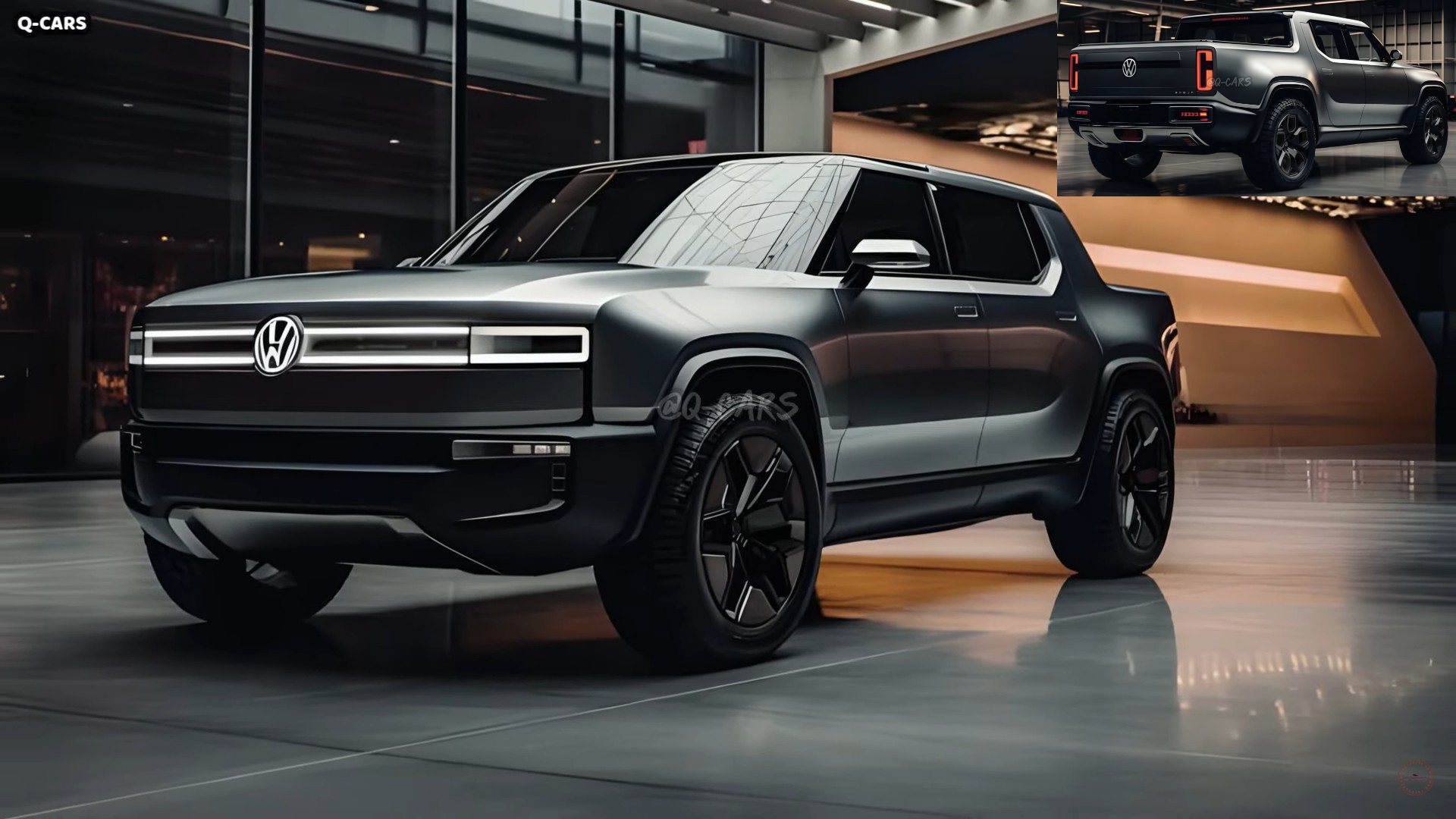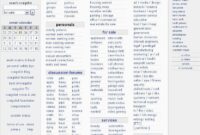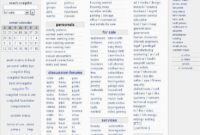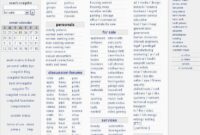Volkswagen Pickup Trucks: Blending Utility with Refinement pickup.truckstrend.com
Introduction: A Heritage of Practicality Meets German Engineering
Volkswagen, a brand synonymous with reliability, innovative engineering, and a focus on the everyday driver, has carved a distinctive niche in the global automotive landscape. While often celebrated for its iconic passenger cars like the Golf and Beetle, Volkswagen’s commitment to utility vehicles, particularly pickup trucks, is a less highlighted yet equally compelling chapter of its history. Volkswagen pickup trucks represent a unique blend of robust functionality, refined comfort, and advanced technology, setting them apart in a competitive segment. From compact urban haulers to formidable off-road adventurers, VW’s pickups are designed not just to transport goods, but to enhance the driving experience, embodying the brand’s philosophy of "Das Auto" – the car, perfected for diverse needs. This article delves into the world of Volkswagen pickup trucks, exploring their evolution, capabilities, and what makes them a compelling choice for both work and leisure.
Volkswagen Pickup Trucks: Blending Utility with Refinement
A Legacy of Utility: Tracing Volkswagen’s Pickup Roots
Volkswagen’s foray into the pickup segment is older and more diverse than many realize, evolving significantly over the decades to meet changing market demands.
- Early Innovators (Type 2 Pickups & Fridolin): The very first Volkswagen pickups emerged from the Type 2 (Transporter) line in the 1950s, offering single and double cab variants that were incredibly versatile and robust, becoming staples for small businesses and tradespeople worldwide. Less known but equally significant was the Type 147, affectionately known as the "Fridolin," a specialized delivery van based on Beetle components, often seen in postal services.
- The Compact Utility Era (Caddy Pickup): In the late 1970s, Volkswagen introduced the Caddy pickup, initially based on the Golf Mk1. This compact, front-wheel-drive utility vehicle proved immensely popular, especially in North America (where it was known as the Rabbit Pickup) and Europe. It offered car-like driving dynamics with the practicality of an open bed, perfect for light hauling and urban deliveries. Later generations of the Caddy evolved away from a true open-bed pickup, transforming into more versatile panel vans and MPVs, but its legacy as a compact utility vehicle remains.
- Collaboration and Market Expansion (Taro): In the late 1980s, Volkswagen partnered with Toyota to produce the Taro, essentially a rebadged Toyota Hilux. This collaboration allowed VW to offer a more conventional, robust mid-size pickup in markets where such vehicles were in high demand, bridging a gap in their utility vehicle lineup before developing their own purpose-built modern pickup.
The Modern Workhorse: The Volkswagen Amarok
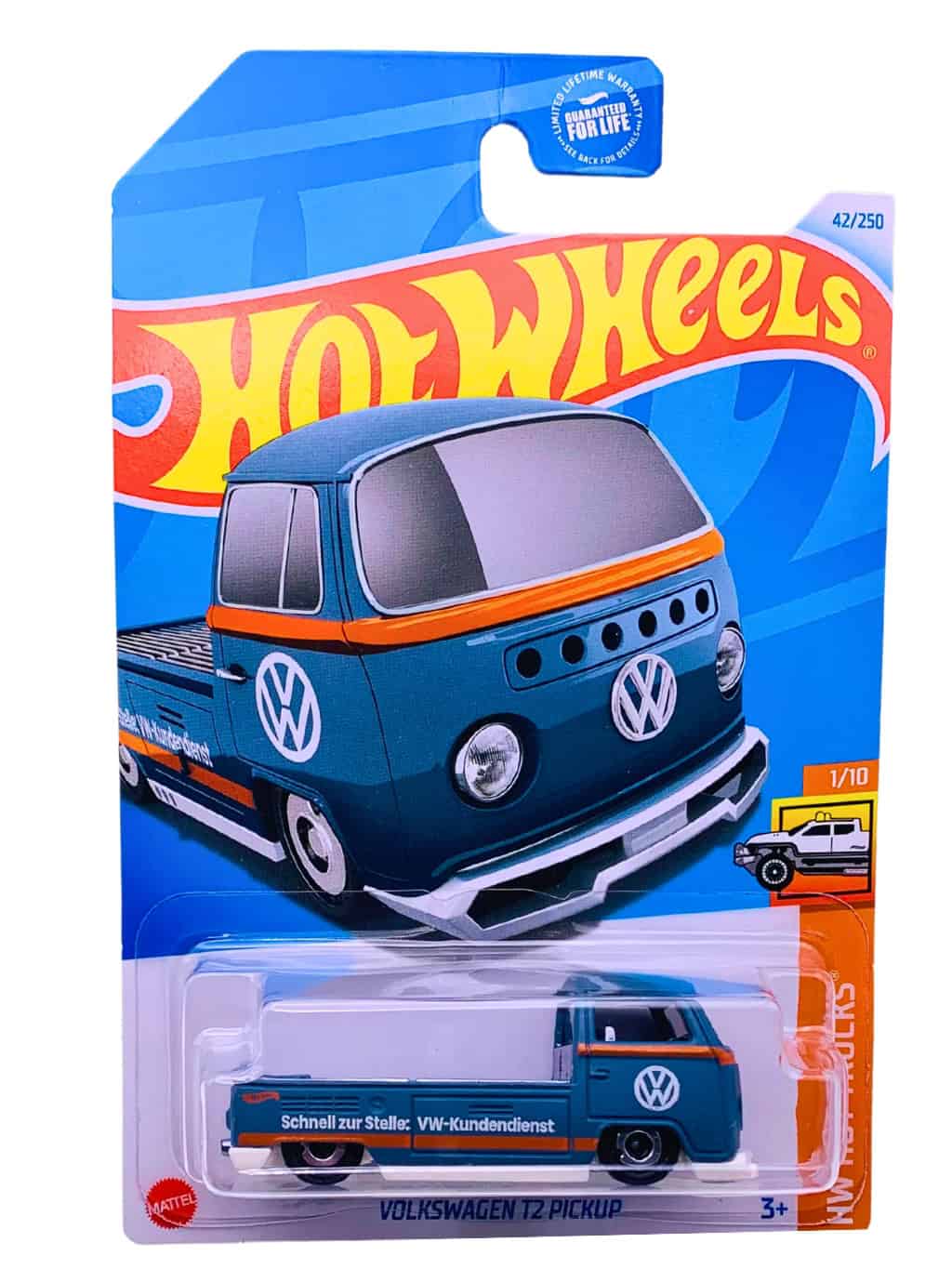
The Amarok, launched in 2010, represents Volkswagen’s most significant and globally recognized entry into the modern mid-size pickup truck market. Designed from the ground up to be a premium yet rugged vehicle, it embodies German engineering prowess in a utility package.
- Design and Philosophy: The Amarok was conceived to blend the robust capabilities expected of a pickup with the refined driving experience and comfort associated with Volkswagen passenger vehicles. Its design is muscular and purposeful, yet sophisticated, making it equally at home on a construction site or a city street.
- Performance and Capabilities:
- Engine Options: The Amarok has historically offered a range of powerful and efficient engines, most notably the V6 TDI diesel, which provides immense torque, excellent towing capacity, and impressive fuel economy for its class. Petrol options have also been available in select markets.
- Drivetrain: Available in both 2WD and Volkswagen’s renowned 4MOTION all-wheel-drive system, the Amarok offers superior traction and off-road capability. The 4MOTION system, often with selectable low range and differential locks, makes it a formidable contender on challenging terrain.
- Towing and Payload: With impressive towing capacities (often exceeding 3.5 tonnes) and substantial payload ratings, the Amarok is built to handle serious work, from towing trailers to carrying heavy loads in its spacious bed.
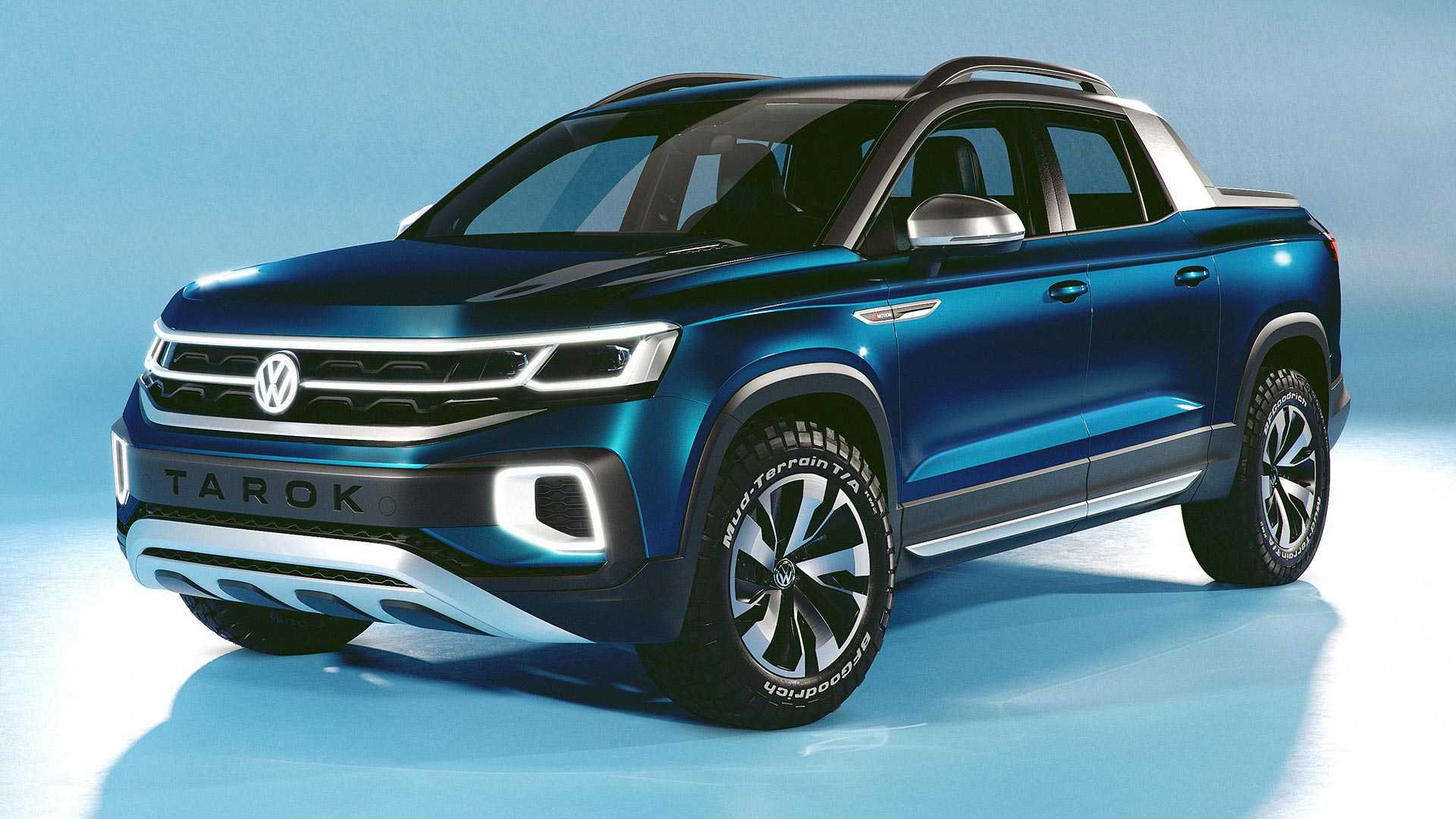
- Interior and Technology: Inside, the Amarok offers a car-like cabin with high-quality materials, comfortable seating, and an intuitive infotainment system. Modern amenities like touchscreen displays, navigation, advanced driver-assistance systems, and connectivity features elevate the driving experience, distinguishing it from more utilitarian rivals.
- Global Reach: While not initially available in North America (due to market complexities and the "chicken tax"), the Amarok has been a strong performer in Europe, Australia, South Africa, and Latin America. The second generation, co-developed with Ford’s Ranger, is now poised for a broader global presence, including potential entry into the North American market.

Compact Contenders: The Volkswagen Saveiro and Caddy Pickups (Regional Focus)
Beyond the Amarok, Volkswagen continues to cater to specific regional demands with smaller, more nimble pickup offerings.
- Volkswagen Saveiro: Exclusively popular in Latin American markets, the Saveiro is a compact, unibody pickup based on Volkswagen’s small car platforms (like the Gol/Polo). It’s a testament to the region’s preference for smaller, more economical utility vehicles.
- Key Characteristics: The Saveiro is known for its agility, fuel efficiency, and ease of maneuverability in urban environments. It offers a practical open bed, making it ideal for small businesses, light cargo transport, and recreational use.
- Variants: Available in single cab, extended cab, and double cab configurations, the Saveiro caters to various needs, from pure workhorse to a versatile personal vehicle. Its car-like driving dynamics and lower running costs make it a popular choice.
- Caddy Pickup (Historical Context): As mentioned, while the modern Caddy is primarily a van, its origins as a compact pickup (especially the Mk1 based on the Golf) were significant. These vehicles offered a unique blend of car comfort and pickup utility, perfect for those needing light hauling capacity without the bulk of a larger truck. Though no longer produced as a dedicated pickup, its spirit lives on in the smaller utility segments.
Why Choose a Volkswagen Pickup? Benefits and Advantages
Opting for a Volkswagen pickup truck offers a compelling array of benefits that distinguish them in the crowded utility vehicle market:
- Superior Driving Dynamics: VW pickups, particularly the Amarok, are renowned for their refined, car-like driving experience. This means less fatigue on long journeys, better handling, and a more comfortable ride compared to many traditional body-on-frame rivals.
- Premium Interior and Comfort: Volkswagen prioritizes interior quality and ergonomics. Their pickups offer well-designed cabins, quality materials, comfortable seating, and advanced infotainment systems, making them suitable for both work and family duties.
- Robust German Engineering: Built to Volkswagen’s exacting standards, these trucks boast excellent build quality, durability, and reliability. Components are designed for longevity, contributing to lower long-term ownership costs.
- Advanced Technology and Safety: VW pickups often come equipped with a suite of modern technologies, including advanced driver-assistance systems (ADAS), intelligent infotainment, and comprehensive safety features, ensuring both convenience and peace of mind.
- Powerful and Efficient Powertrains: The available engines, especially the V6 TDI in the Amarok, offer a superb balance of high torque for heavy-duty tasks and surprising fuel efficiency, a critical factor for both commercial and private users.
- Versatility: Whether it’s the rugged off-road capability of the Amarok 4MOTION or the urban agility of the Saveiro, VW pickups are highly versatile. They seamlessly transition from demanding work vehicles to comfortable family transporters or adventure vehicles.
Important Considerations Before Buying a Volkswagen Pickup
Before investing in a Volkswagen pickup, prospective buyers should consider several factors to ensure the vehicle aligns with their specific needs:
- Intended Use: Define your primary need. Will it be a dedicated workhorse for heavy hauling and towing (Amarok)? Or a light utility vehicle for urban deliveries and occasional cargo (Saveiro)? Your use case will dictate the ideal model, engine, and drivetrain.
- Engine and Drivetrain Choice: Research the available engine options (diesel vs. petrol, power output) and drivetrain configurations (2WD vs. 4MOTION). For serious off-roading or heavy towing, the 4MOTION with low range is essential. For lighter duties, 2WD might suffice and offer better fuel economy.
- Regional Availability: Volkswagen’s pickup lineup varies significantly by region. The Saveiro is exclusive to Latin America, while the Amarok has a strong presence in Europe, Australia, and Africa. Verify local availability and specifications.
- Trim Levels and Features: VW offers various trim levels, from basic work-oriented models to luxurious variants with advanced features. Prioritize features that are truly necessary for your work or lifestyle.
- Aftermarket Support and Modifications: While robust, consider the availability of aftermarket accessories and parts if you plan extensive modifications (e.g., lift kits, specialized canopies, off-road equipment).
- Cost of Ownership: Factor in fuel efficiency, servicing costs, insurance, and potential resale value. While initial purchase prices can be higher, VW’s strong build quality often translates to good long-term value.
Maintenance Tips for Longevity
To ensure your Volkswagen pickup truck remains reliable and performs optimally for years to come, regular and diligent maintenance is key:
- Adhere to Service Schedule: Follow Volkswagen’s recommended service intervals for oil changes, filter replacements, and major inspections. This is crucial for engine health and warranty validity.
- Check Fluid Levels Regularly: Routinely check engine oil, coolant, brake fluid, power steering fluid, and transmission fluid. Top up or replace as necessary.
- Tyre Care: Maintain correct tyre pressure as per the manufacturer’s specifications. Rotate tyres regularly to ensure even wear, and inspect them for damage or excessive wear.
- Brake Inspection: Have your brakes inspected periodically. Pay attention to any unusual noises or reduced braking performance.
- Off-Road Specific Checks (for 4×4 models): If you frequently engage in off-roading, inspect the undercarriage for damage, check suspension components, and clean out mud or debris after each trip.
- Protect the Bed: Use a bed liner to prevent scratches and dents, preserving the resale value and functionality of the cargo area.
Challenges and Solutions
While Volkswagen pickups offer numerous advantages, some challenges might arise, often with straightforward solutions:
- Perceived Higher Initial Cost: VW pickups, especially the Amarok, can have a higher initial price point compared to some competitors.
- Solution: Focus on the long-term value. Their superior build quality, comfort, and advanced features often lead to better resale value and a more satisfying ownership experience. Financing options can also make the initial investment more manageable.
- Limited Availability in Certain Markets: The Amarok, for instance, has historically not been sold in North America, limiting options for some buyers.
- Solution: The second-generation Amarok’s co-development with Ford suggests a broader global rollout, potentially including markets like North America. For regions where a specific model isn’t available, consider importing (if feasible and legal) or exploring the robust used market.
- Fuel Consumption for Larger Models: While efficient for their class, the V6 diesel Amarok can still consume a fair amount of fuel, especially under heavy load or off-road conditions.
- Solution: Optimize driving habits (smooth acceleration, maintaining consistent speeds). Ensure proper tyre pressure and regular maintenance. For those prioritizing economy, consider the smaller engine options if available, or the more compact Saveiro where suitable.
Estimated Price Ranges for Volkswagen Pickup Trucks
It is crucial to note that prices for Volkswagen pickup trucks vary significantly based on the region, year of manufacture, specific trim level, engine configuration, and whether the vehicle is new or used. The following table provides estimated price ranges and should be used as a general guide only. For precise pricing, consult local Volkswagen dealerships or reputable used car platforms in your specific market.
| Model | Market/Region | Estimated New Price Range (USD Equivalent) | Estimated Used Price Range (USD Equivalent) | Key Factors Influencing Price |
|---|---|---|---|---|
| Volkswagen Amarok (1st Gen) | Europe, Australia, SA, LA | $35,000 – $65,000+ | $15,000 – $40,000+ | Engine (V6 TDI often higher), Trim (Highline, Aventura), Drivetrain (4MOTION), Year, Mileage, Condition |
| Volkswagen Amarok (2nd Gen) | Global (expanding) | $40,000 – $75,000+ | N/A (too new for significant used market) | Engine (V6 TDI still premium), Advanced Tech, Trim (PanAmericana, Aventura), Newness |
| Volkswagen Saveiro | Latin America | $15,000 – $25,000+ | $8,000 – $18,000+ | Engine size, Cabin type (single/double), Trim (Robust, Cross), Year, Mileage, Condition |
| Volkswagen Caddy Pickup (Historical) | Europe (Used Market) | N/A (Discontinued as pickup) | $5,000 – $15,000+ | Condition, Rarity (Mk1s are collector items), Modifications, Mileage |
| Volkswagen Taro (Historical) | Europe (Used Market) | N/A (Discontinued) | $3,000 – $10,000+ | Condition, Mileage, Rust, Rarity |
Note: Prices are highly variable and subject to change based on economic conditions, local taxes, import duties, and specific vehicle configurations. Always confirm with a local dealer.
Frequently Asked Questions (FAQ) about Volkswagen Pickup Trucks
Q1: Are Volkswagen pickup trucks available in North America (USA/Canada)?
A1: Historically, the Amarok was not sold in North America. However, with the launch of the second-generation Amarok (co-developed with the Ford Ranger), there is strong speculation and increasing likelihood that it will eventually be offered in these markets, potentially starting with Mexico. The compact Caddy pickup was sold in the US as the Rabbit Pickup in the 1980s.
Q2: What is the main difference between the Volkswagen Amarok and the Saveiro?
A2: They serve entirely different segments. The Amarok is a mid-size, body-on-frame truck (though the second gen is unibody on a ladder frame, offering better ride), designed for heavy-duty work, towing, and serious off-roading, competing with vehicles like the Ford Ranger and Toyota Hilux. The Saveiro is a compact, unibody pickup based on a small car platform, designed for lighter loads, urban agility, and fuel efficiency, popular in Latin American markets.
Q3: Are Volkswagen pickups good for off-roading?
A3: Yes, particularly the Amarok, especially models equipped with the 4MOTION all-wheel-drive system, low-range gearing, and differential locks. Its robust chassis, powerful engines, and sophisticated traction control systems make it highly capable on challenging terrain.
Q4: What is the typical towing capacity of a Volkswagen Amarok?
A4: The towing capacity of the Amarok varies by engine and configuration, but models with the V6 TDI engine often boast a braked towing capacity of up to 3.5 tonnes (7,716 lbs), making them highly capable for trailers, boats, and caravans.
Q5: Are Volkswagen pickup trucks reliable?
A5: Generally, yes. Volkswagen is known for its engineering quality and robust construction. The Amarok, in particular, has a strong reputation for durability and reliability, especially with consistent maintenance. Like any vehicle, proper servicing and care are crucial for longevity.
Q6: What makes a VW pickup different from other brands like Ford or Toyota?
A6: Volkswagen pickups typically distinguish themselves through a more refined, car-like driving experience, a premium interior, and a strong emphasis on comfort and advanced technology. While competitors focus on raw ruggedness, VW often blends that with a higher level of sophistication and daily usability.
Conclusion: Volkswagen’s Enduring Vision for Utility
Volkswagen pickup trucks, from their humble beginnings with the Type 2 to the globally ambitious Amarok, represent a consistent pursuit of utility blended with the brand’s core values of quality, innovation, and driving pleasure. They defy the stereotype of pickups as purely utilitarian beasts, instead offering vehicles that are as comfortable on a long road trip as they are capable on a challenging job site.
Whether it’s the robust, premium capabilities of the Amarok or the nimble, efficient urban utility of the Saveiro, Volkswagen has demonstrated a commitment to providing diverse solutions for those who need a truck that works hard but also feels refined. As the automotive landscape continues to evolve, Volkswagen’s strategic moves in the pickup segment, including collaborations and a focus on advanced powertrains and features, ensure that their distinctive blend of utility and sophistication will continue to appeal to a broad range of customers worldwide. For those seeking a pickup that delivers more than just cargo space, a Volkswagen truck offers a compelling and comprehensive package.
